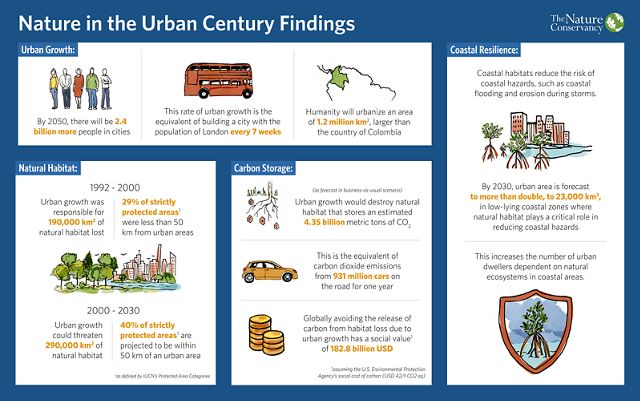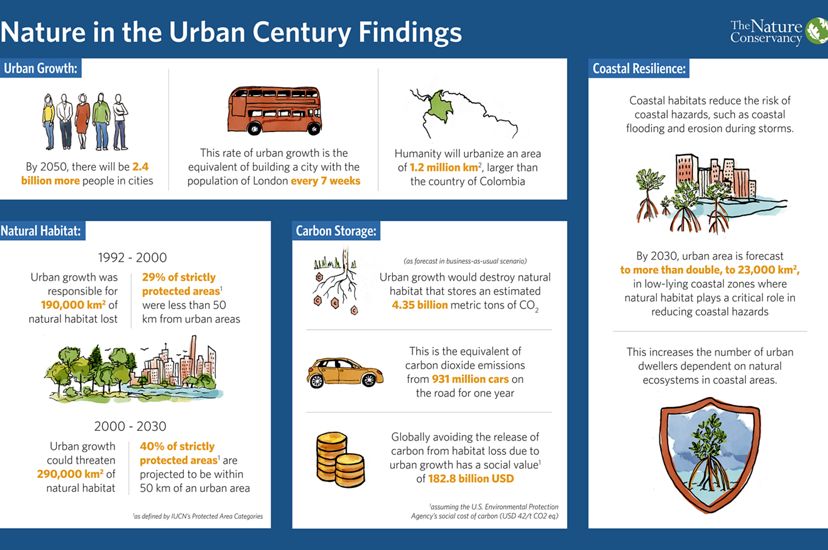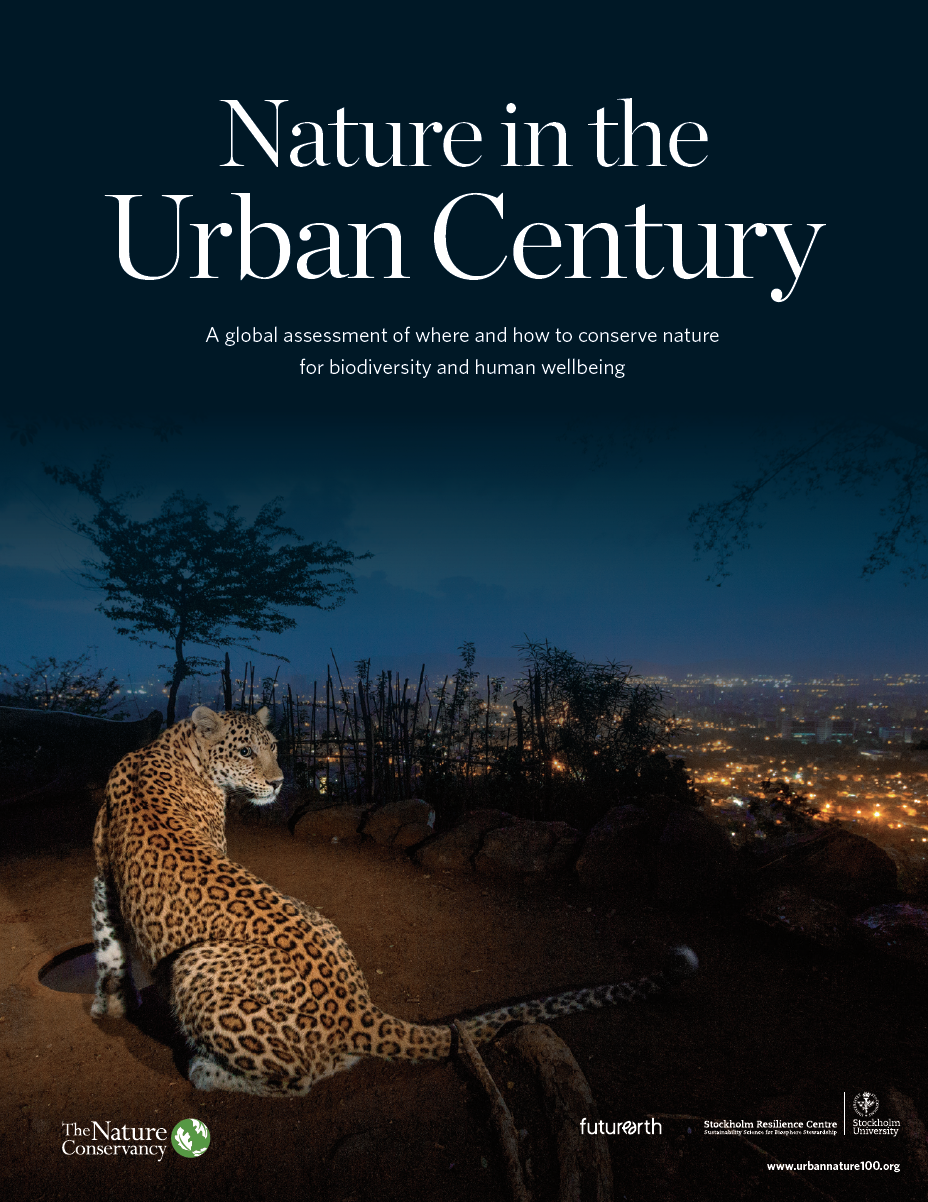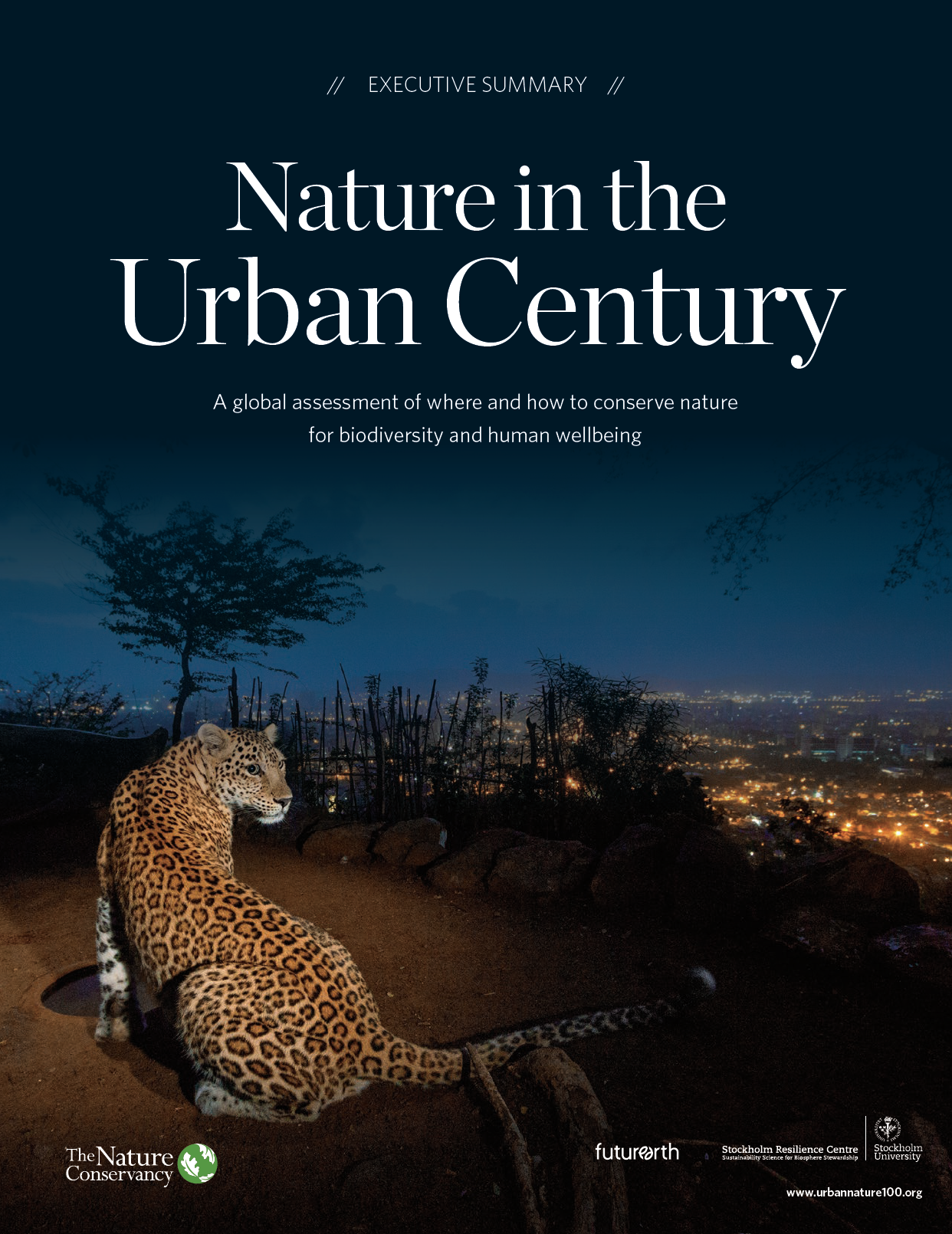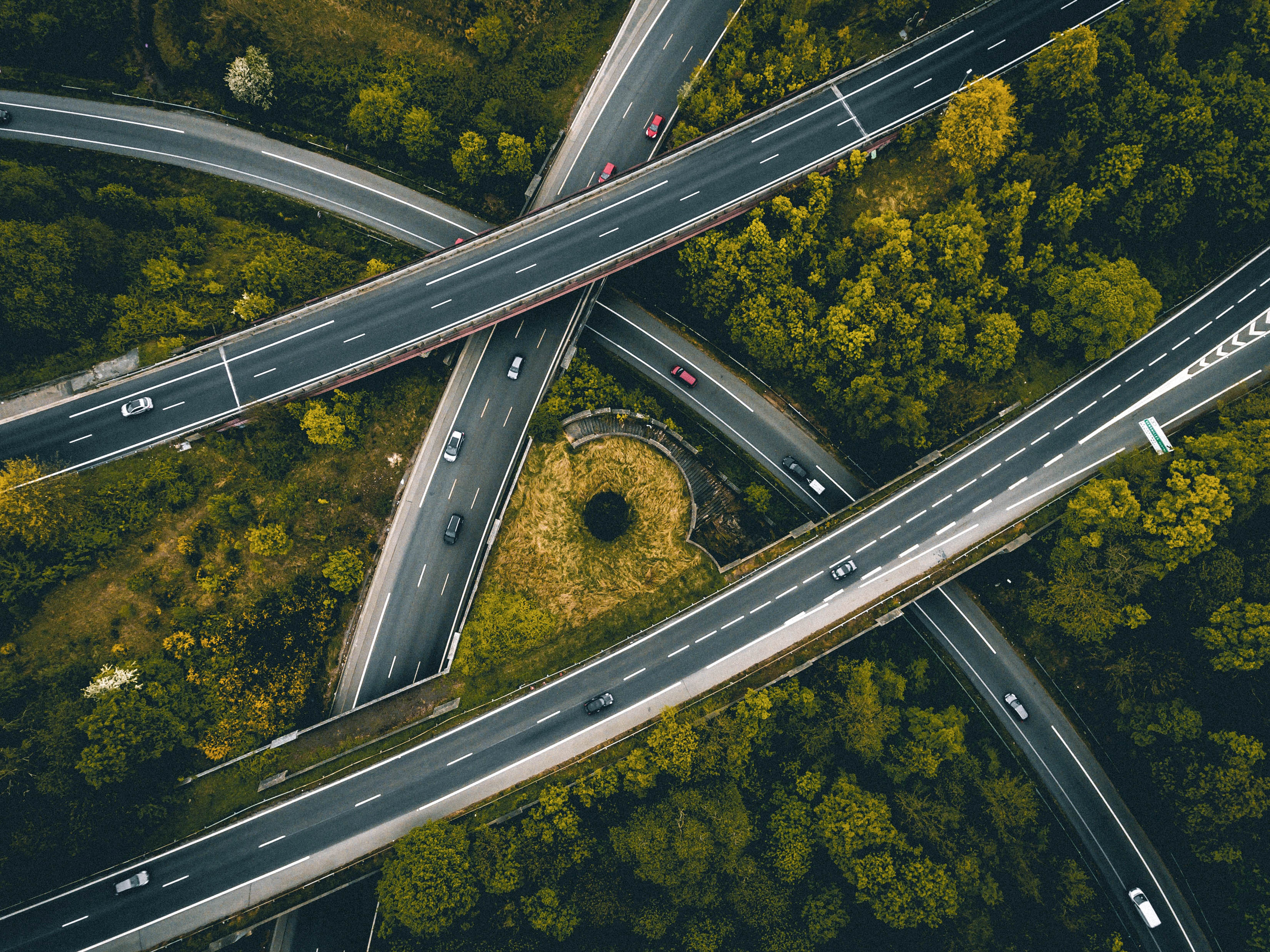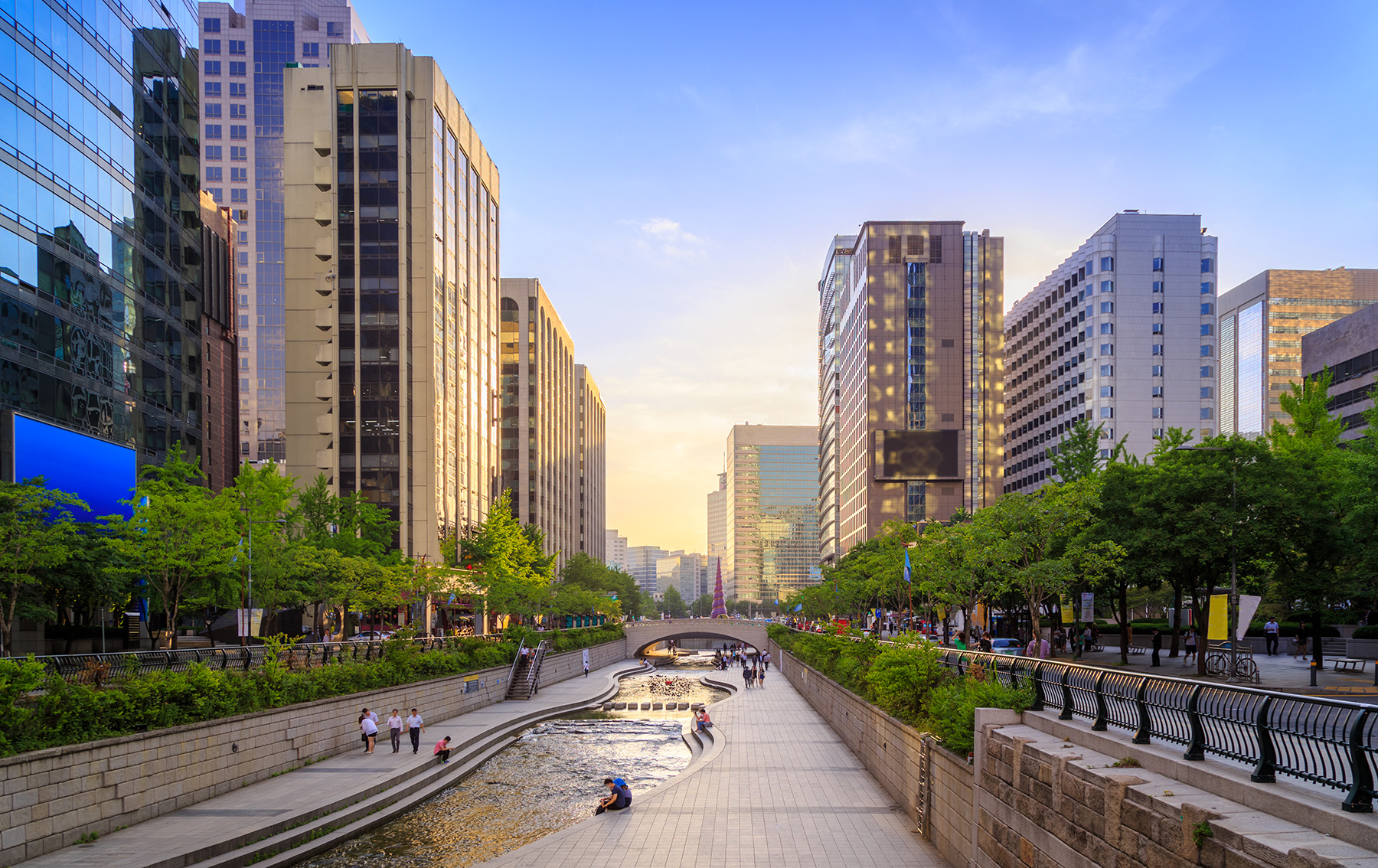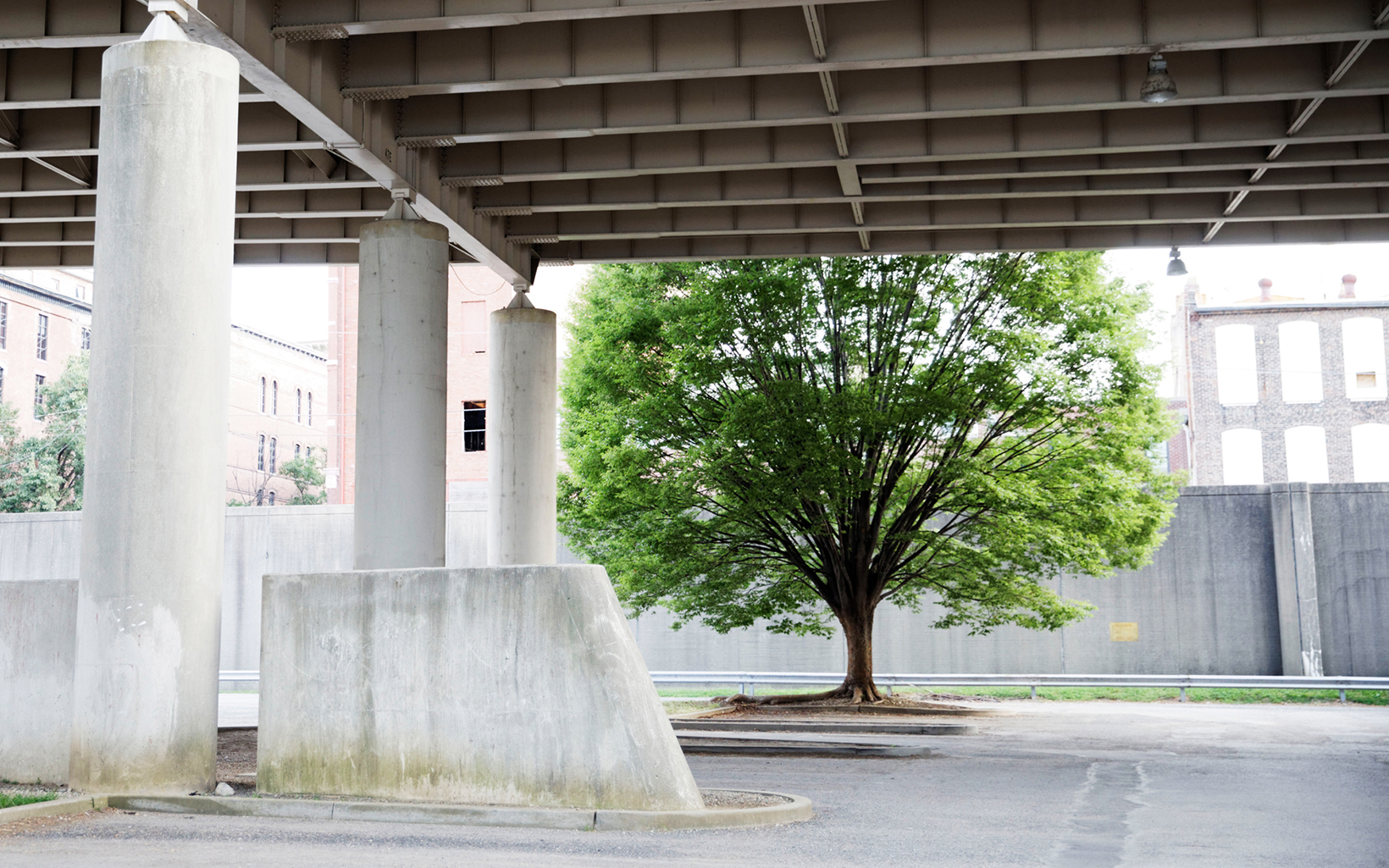Nature in the Urban Century
Booming cities raise the stakes for biodiversity—here’s how smart urban planning can serve people and nature
Dozens of leopards prowl India’s Sanjay Gandhi National Park. The park has more than twice the density of the big cats as some of the most productive savannahs of Africa—despite the fact that it is a 104-km2 island of core habitat surrounded by the ever-expanding city of Mumbai.
Read the Full Report
DownloadThe proximity of people and wildlife in Mumbai attracts attention, but this is just one example of the habitat areas globally that will grow ever closer to cities as urban areas expand by an anticipated 2.4 billion people in the coming decades—a rate equivalent to building a new London every seven weeks.
Nature in the Urban Century, a new report authored by The Nature Conservancy, Future Earth and The Stockholm Resilience Centre, finds that if current trends continue over the next two decades, urban growth will threaten more than 290,000 km2 of habitat—an area larger than New Zealand. And protected lands are increasingly in close proximity to cities, with 40 percent of strictly protected areas anticipated to be within 50 km of a city by 2030.
Click below to jump to interactive maps exploring impacts of urban growth.
Download
Released in advance of the 2018 UN Convention on Biological Diversity Conference of the Parties meeting, the report calls for global action to conserve habitat for nature and for human well-being as global leaders work to revise goals for biodiversity protection within the convention.
“Nature in and near cities is crucial for maintaining biodiversity, but also for the people who depend on the benefits that nature provides,” said Dr. Rob McDonald, lead scientist for Global Cities at The Nature Conservancy and the report’s coordinating lead author.
Urbanization has been a major driver of habitat loss over recent decades, but this trend can be shifted with better planning for sustainable urban growth and use of natural solutions, careful management of protected areas near cities, and integration of habitat into cities, the report finds.
“Cities have been described as humanity’s greatest invention, and cities themselves, as centers of innovation, are a critical partner in protecting nature while improving the lives of billions of urban dwellers around the world,” McDonald said, citing the potential for sustainable cities to use energy and other resources efficiently.
Preserving biodiversity is just one of the urgent reasons smarter urban planning is needed. Unchecked urban growth also threatens the ability of nature to protect the 40 million people currently living in coastal cities and towns at increased risk from the effects of climate change—a number projected to triple by 2070. Slowing urbanization of coastal habitat areas can shelter communities from flooding and storm surge, while significantly supporting efforts to protect biodiversity, the reports finds. And natural habitat areas provide critical carbon storage that could help mitigate climate change. Carbon equivalent to the annual emissions from 931 million cars would be released by 2030 if urbanization trends continue.
Urban Biodiversity Around the World
Quote: Rob McDonald
We can ensure a bright future for nature and for people in the urban century if we take decisive action now.
There’s still time to protect critical habitat even as cities grow, but it will take concerted planning. For starters, local governments need to be brought into national-planning for biodiversity goals. City leaders also need to look proactively at the benefits generated by biodiversity and ecosystem benefits so this information can drive effective “greenprints” for urban growth that integrate natural areas within urban area
International institutions also have a role to play. Major international funding sources such as the Global Environmental Facility and the Green Climate Fund should seek to directly appropriate funding to mitigate the impact of urban growth on biodiversity and ecosystem services. Finally, the Parties to the Convention on Biological Diversity must take the time between now and 2020 to plan for what urban conservation efforts are needed to meet the challenges ahead, including specific goals like urban growth targets or urban-based metrics that measure progress against the Aichi targets.
Download
Urban growth impacts on habitat, protected areas, and carbon, by country
Explore findings by clicking on the tabs below to see analyses of urban-caused habitat loss, protected areas near cities, which areas are seeing increases in urbanization near protected areas, and carbon storage that could be lost to urbanization. For country-specific facts about urbanization trends and what’s at stake, zoom in and click within a country’s borders.
Habitat loss from urban growth and its impact on protected area and species
Explore details about the relationship between urban growth trends and specific protected areas or threatened species.
Download
-

Global Insights
Check out our latest thinking and real-world solutions to some of the most complex challenges facing people and the planet today. Explore Our Insights

